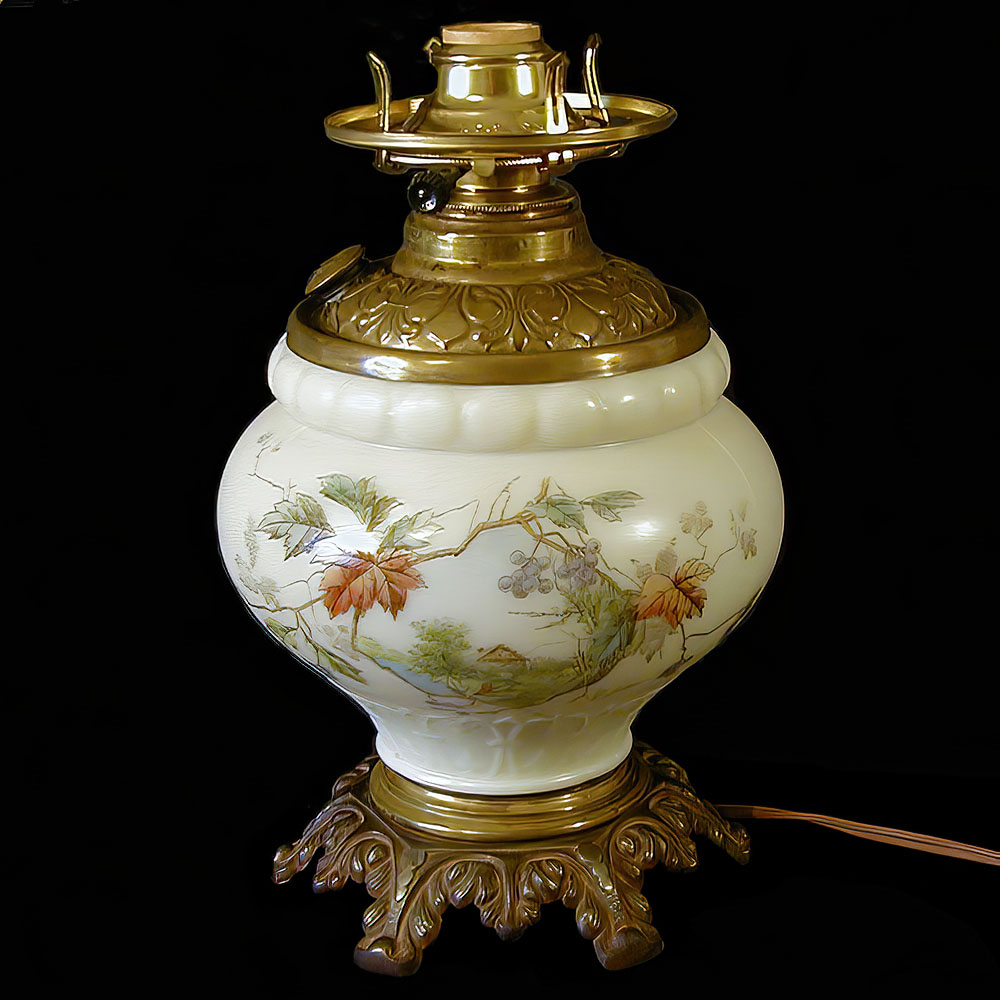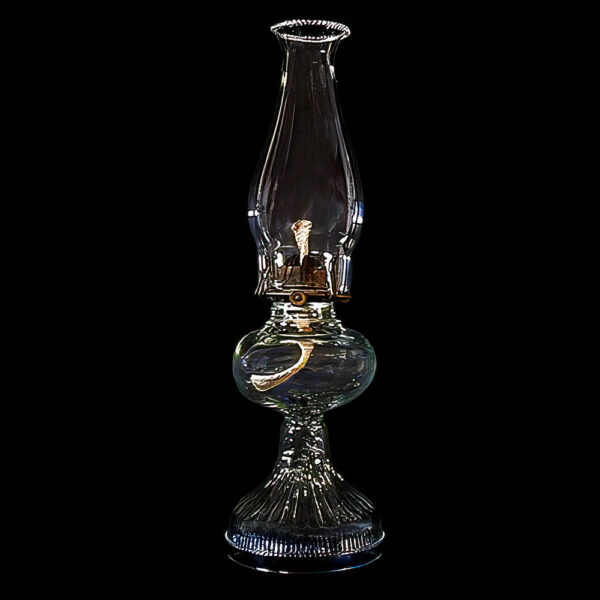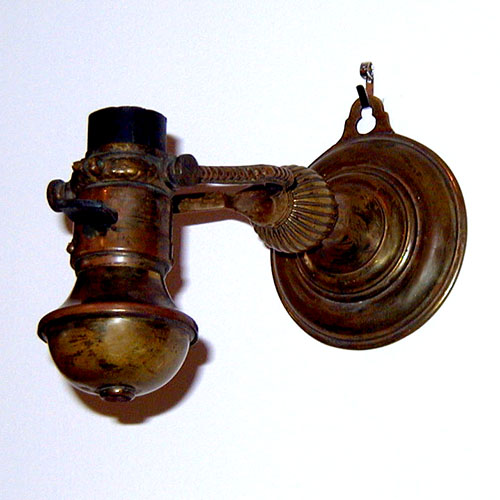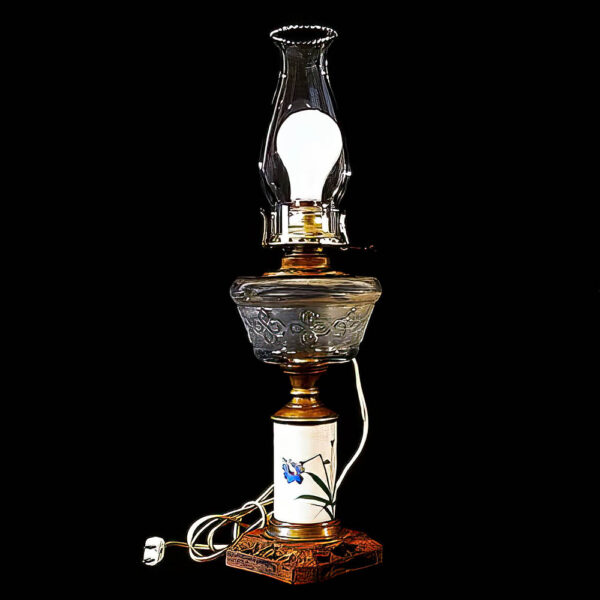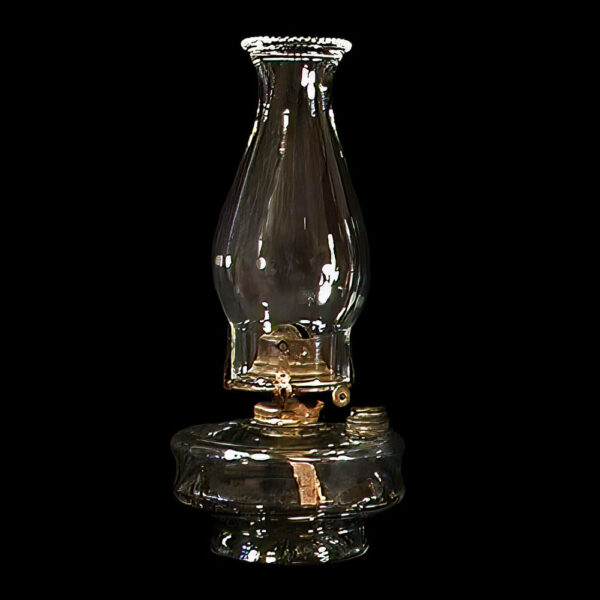Featured is a wonderful Antique Table Lamp, Wave Crest Glass Lamp Base.
- Wave Crest glass is opaque white glassware.
- The C.F. Monroe Company was founded in 1880 by Charles F. Monroe, a glass decorator.
- His company specialized in the decoration of milky white Opal Ware glass and the making of Opal Ware objects.
- This lamp is symbolic of the Gilded Age of America, where the taste for exquisite European style decorative arts was a must in every sophisticated home.
- F. Monroe objects are sought after by collectors today for their artistic vision, delicate details, and period aesthetic.
- A light fixture consists of a light source (bulb or flame), an energy source (electric, gas, or solid fuel), and the fixture’s body.
- The body takes many forms, from ceiling mounted to wall mounted to floor standing to portable. Typically, historic lights include arms to support multiple light sources, since the wattage was not as high as is available today.
- A socket is mounted at the end of the arm, and frequently a shade is placed over the light source (a glass panel or globe, or a metal frame with fabric or paper over it), attached by a harp or bracket.
- All lights have some sort of base, some bases are weighted for a table or floor lamp.
- A plate is usually used to attach a sconce to the wall for wall-hung lights.
- Often a bell-shaped fitting with a chain or rod attached is used for lights hung from the ceiling.
- The materials used in the manufacture of historic lights vary widely, from brass to bronze to cast or forged iron to even wood.
- Some parts of the lamp may include adornments of cut, cast, or blown glass, ceramic elements, stained glass, or crystal.

